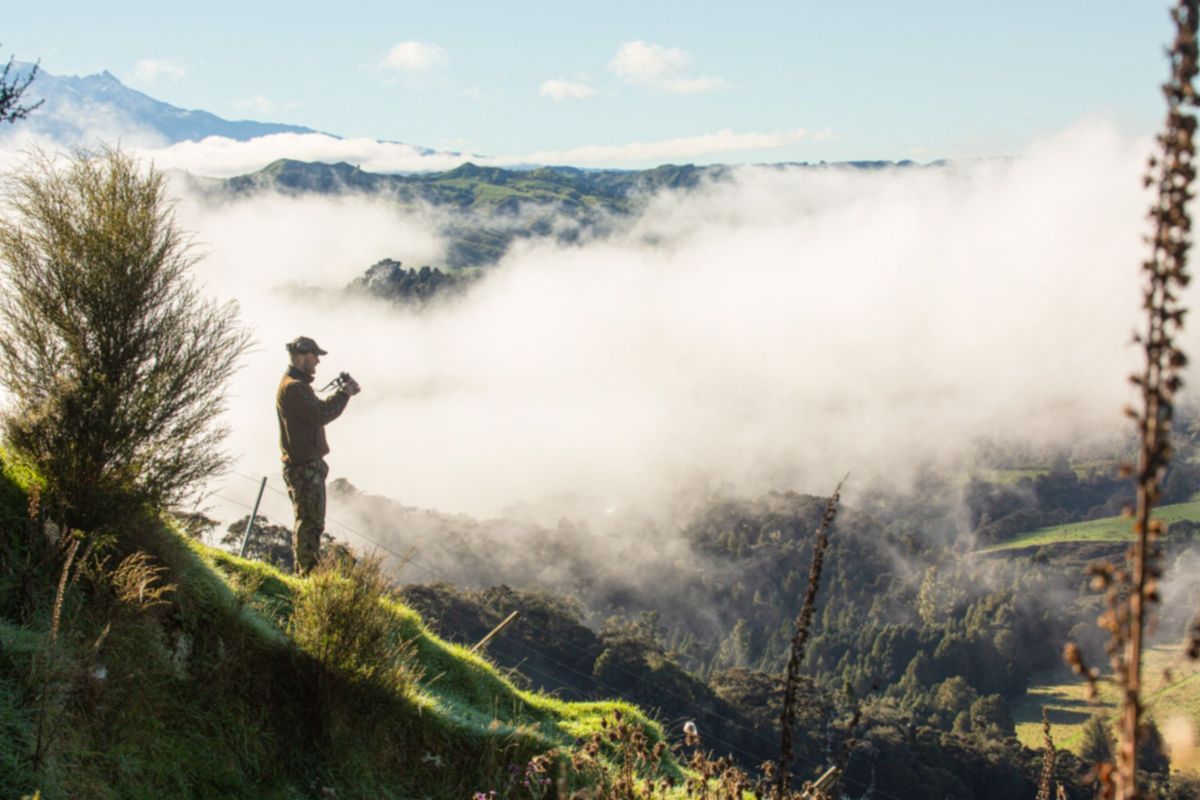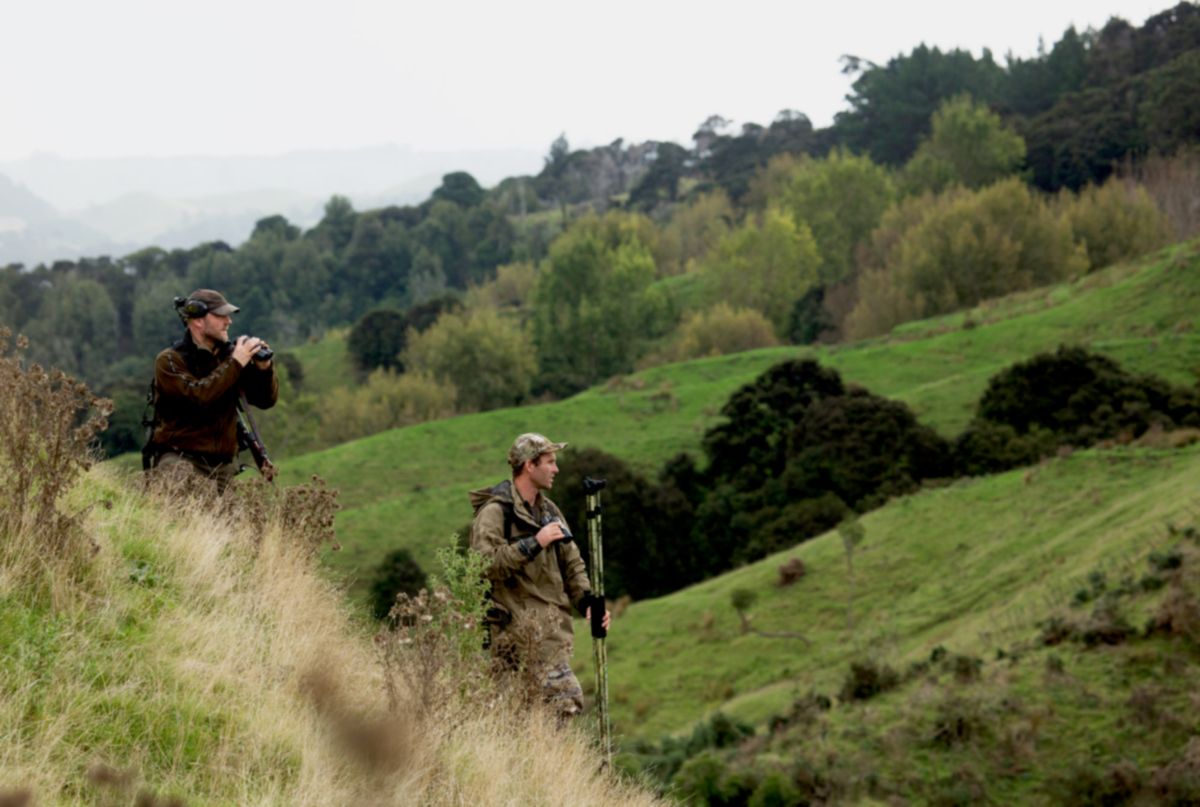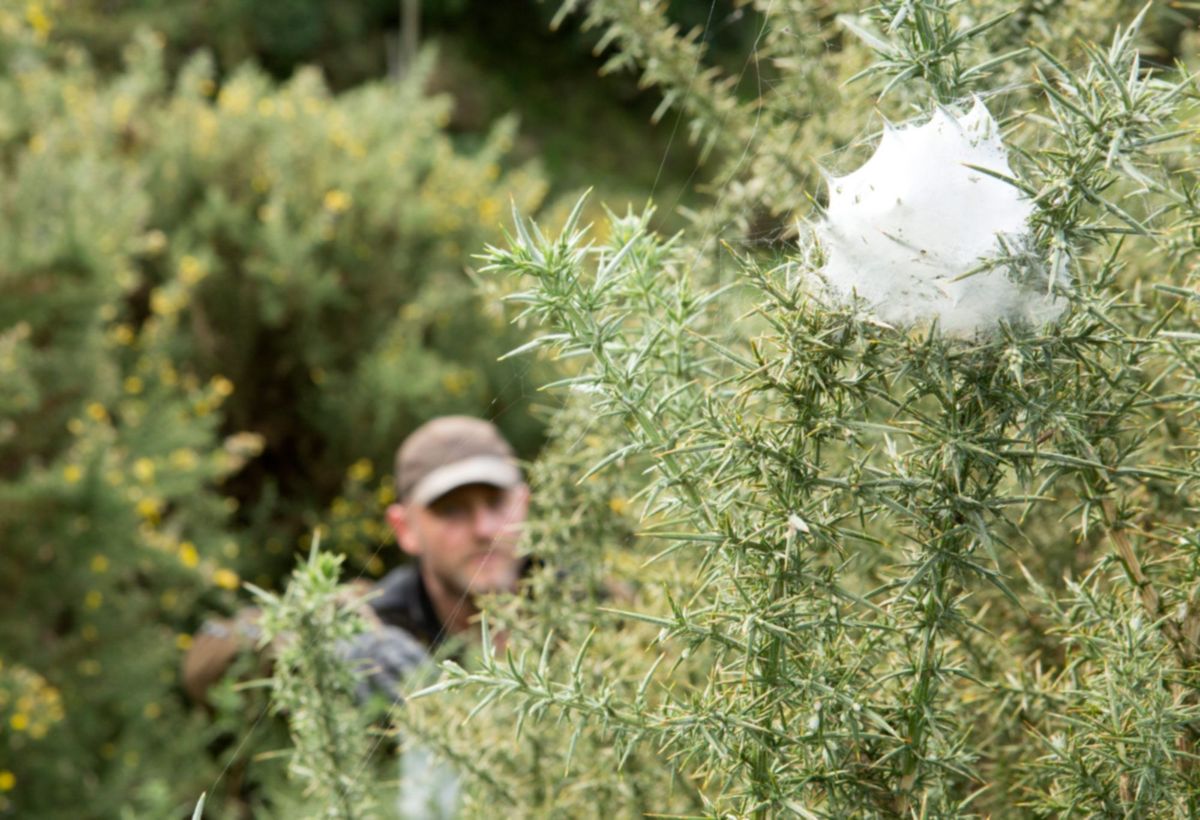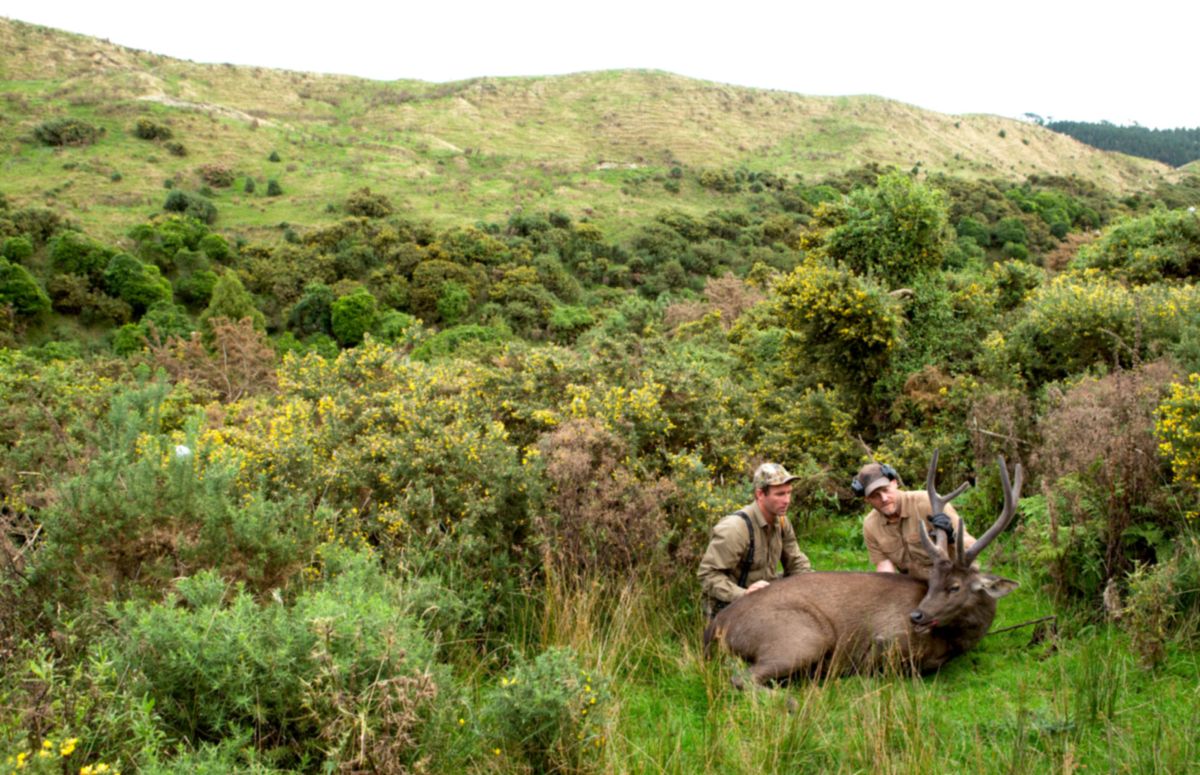Stalking
Stalking for Sambar stags in New Zealand
New Zealand has quickly become one of the most popular travel destinations for European hunters, and it’s easy to understand why. The country offers great hunting, not least for the large Sambar deer.
Hunting guide Marcel Powell slips the key from the ATV machine into his pocket and zips it carefully. Losing the key out here may not be a disaster, but it would certainly make things difficult. New Zealand farms are often big and on this farm the farmhouse is far away too.
One after another, we start off in the dark night. Marcel in front, then the hunter. The grass is wet and the slopes uneven. Now and then we fall and slide a few meters before a stub stops us. Fortunately, none of us are hurt as we step by step approach the place Marcel has chosen as the best for today's observations.
As we later find a good place between thorny bushes to sit and glass for the game, it is still half-dark. We cannot see anything yet, but the hunt is in on and we are looking forward to enjoying the sight of the first sambar deer.
ROLLING RUT
Sambar stags are shy, and the weather plays a large role in the animals' activity level. Today, the weather is fine and as long as it does not begin to rain, there will be activity. Even in the first light, we see animals, including a huge shadow that slides rapidly through the gap between a few bushes. As the stag changes direction and goes up the slope, the hunter gets a quick assessment of the trophy. From behind, this stag looks big. The trophy has six points which, for sambar stags, is a maximum. When it a few minutes later clears the bushes, it's far from being as big as first assumed, though. The first day offers no changes to take a representative deer, despite 10 hours of intense hunting.

Sambar deer differ from our domestic deer species by a, to some extent, ‘rolling’ rut. For a period of eight months a year (from May to December) the hinds can be in rut. During this period, most stags will carry velvet-free antlers. Normally, the antlers are thrown in November and December. Anyway, it is not for sure when during the year the antlers are dropped. This is why the deer that holds the strongest trophy at a given hunting time may well be in velvet. In such cases, the challenge is to assess whether the antlers are hard enough under the velvet for the trophy to be mounted.
SAMBAR'S ON FREE RANGE
It was Falconer Larkworthy, a New Zealand banker and financier, who in 1875 introduced the first two individuals of Sambar deer to New Zealand. With the forward-looking introduction, Larkworthy created a possible niche income through trophy hunting for future generations of farmers in the coastal region of Manawatu. This is one of the few places in the World where it is possible to hunt Sambar stag on a free range.
Larkworthy imported two animals from Ceylon (today Sri Lanka), and they were released around 40 kilometers from the farm we are hunting at. This release was subsequently followed by several other releases. Today, Sambar deer are found in a quite big area in the southwest part of the Northern New Zealand Island.
The area we hunt in is very scrubby and it is not 100 percent sure that the bullet will not hit a branch when fired. To prevent problems, the hunter has chosen to shoot with a hard bullet in caliber 375 H&H.
Opposite the valley, we see a lot of hinds, younger stags and different kind of birds. It is at the same time both relaxing sitting here and frustrating not seeing any older animals. The only thing we can do is continue waiting and glassing. But nothing further happens today or the day after.

Now or never
Two days later, we have still not had any contact with a good stag for the hunter to take. But one of the velvet stags we’ve seen has the size and age to make it noticeable. The big question is whether the antlers under the velvet are hard or soft. We have, however, previously seen it mark territory and follow females which are good signs that the velvet will soon fall of and that the antlers beneath are hardened.
As the velvet stag slides over an edge on the opposite slope and turns to feed on the bushes, the chance is there. The trophy is representative and over the last three days we have spent many hours here. Anyway, the hunter is still in doubt. Should he shoot or perhaps try to find a representative stag that has already swept the velvet?
For a long time, the stag stays in the bushes, where only its head and antlers can be seen. Then it turns around and takes two steps into an open area. Suddenly, he is completely free. If it takes two steps further, the stag will be absorbed by the bushes again and the chance will be wasted. A hard decision has to be taken, now!

“If it takes two steps further, the stag will be absorbed by the bushes and the chance will be wasted. A hard decision has to be taken, now!”
Hard or soft?
The bullet impact is seen as a clear mark in the thick skin of the animal's shoulder. In the same second the bullet hits, the stag runs forward, turns to the right and thunders down the slope. The run ends up in something resembling a backward fall before the 250-kilo heavy stag is laying still.
The hunt has over the past three days just been about sitting still and observing, but now it changes character. Now the hard work begins. The lower part of the slope is steep, the watercourse at the bottom is muddy and the bushes are dense and thorny. Even though the shooting distance was less than 150 meters, it still takes more than half an hour to reach the animal. Marcel reaches it first through the thorny scrub and out into the open space where the deer is located. He hesitates for a moment, but then grabs the antlers, pulls the head of the animal out of the bushes and tests the hardness of the tips. Then he turns around, looks up at the hunter and nods – the antlers are hard, the hunt has been a success. Now the rest is up to the taxidermist.


Stags in velvet
The vast majority of European trophy hunters will not shoot stags before the animals have swept the velvet. Many would even consider taking a trophy in velvet as unethical. Many American hunters, however, consider a velvet trophy as more interesting than a swept one. European hunters who choose to shoot a stag with antlers in a velvet will probably have a desire to peel the velvet off and mount the trophy without the velvet. For this to be possible, the bone mass under the velvet must be hardened.
Sambar stags
The New Zealand Sambar deer, which originate from Asia, are only found in New Zealand on the Northern part of the island and predominantly on private farms. It is a large deer species where the stag can reach a shoulder height of the nearly 1,4 meters and weigh up to 250 kilos. The hinds are slightly smaller with a maximum shoulder height of 1,2 meters and a weight of up to 160 kilos.